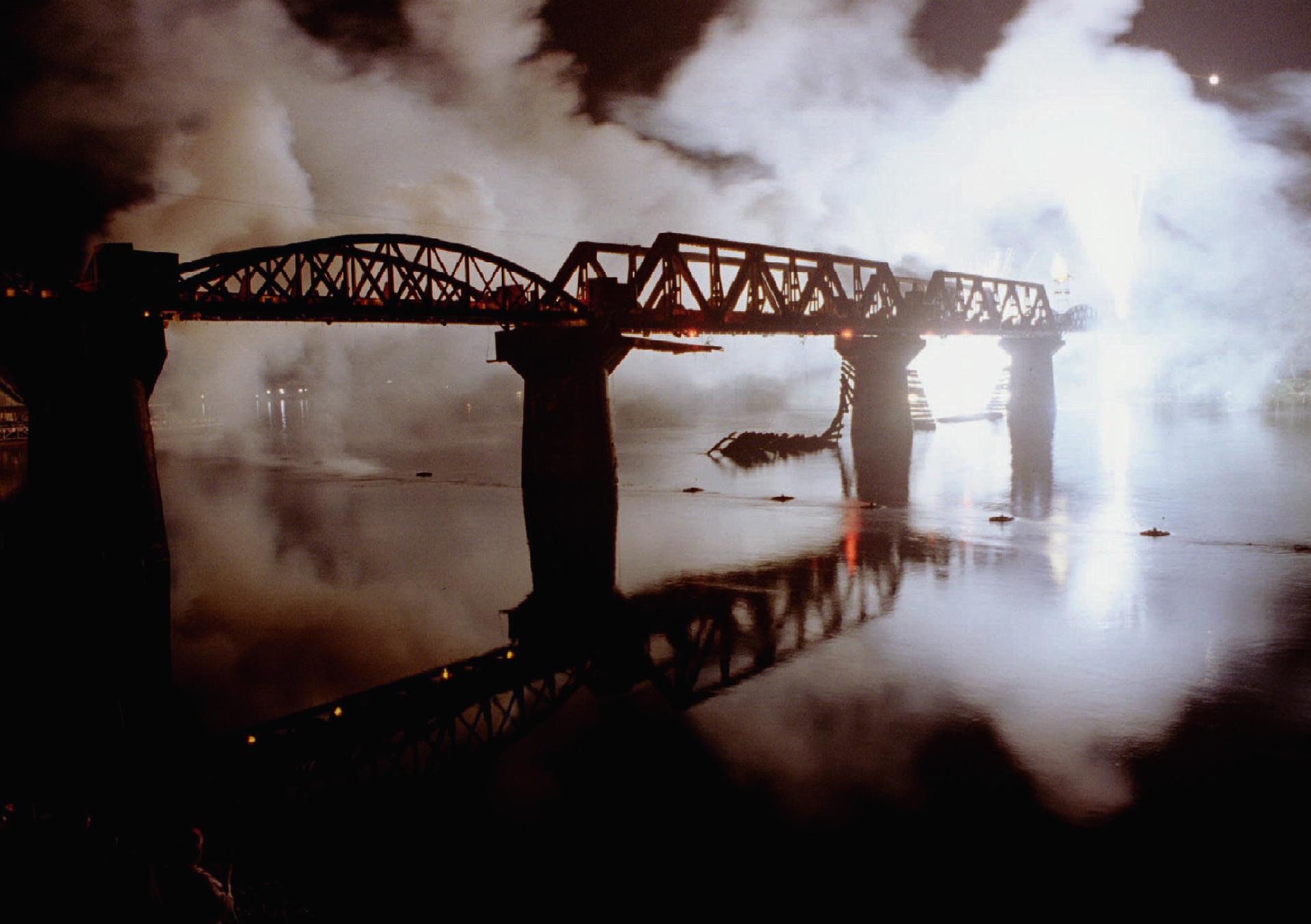A view of the Bridge on the River Kwai during a light-and-sound show in Kanchanaburi, Thailand, in 1994
This year's Man Booker prize for literature in English has been won by Australian novelist Richard Flanagan, for his haunting novel The Narrow Road to the Deep North.
It tells the story of a prisoner of war in the hands of the Japanese during World War II. It was inspired by Flanagan's father's experiences, working on the infamous "Railroad of Death" in Thailand and Burma.
In a BBC interview, Flanagan said the book was not a biography of his father, Archie. But still the work was hugely important to his father, who passed away last year just after the manuscript was completed.
"It mattered to him that people didn’t forget. It mattered enormously to him. He didn’t wish there to be hate or judgement. But he didn’t want that suffering to be forgotten."
The host of The World, Marco Werman, is well aware of Japan's wartime mistreatment of prisoners, because his grandfather was one.
He was Dutch, and was living and working in the Dutch East Indies, now Indonesia, when the Japanese invaded. Unlike many of his fellow prisoners, men and women, he survived.
For most Americans, though, it’s a forgotten chapter of history.
On the same day that the Japanese attacked the United States at Pearl Harbor, December 7, 1941, the Japanese also attacked the British and Dutch empires in southeast Asia.
Those European powers were focussed on Nazi Germany and were unable to stop the Japanese onslaught.
Within a few weeks and months, about 130,000 men were captured, including some 36,000 Americans captured in the Philippines. Tens of thousands of European civilians were also forcibly interned.
The Japanese refused to respect international conventions on the treatment of POWs, and forced them to become slave laborers to try to help the Japanese war effort.
The POWs worked in atrocious conditions in mines, fields, factories and most notoriously on the "Railroad of Death." Think of the 1957 movie Bridge on the River Kwai, or last year's The Railway Man.
This line was started because the Japanese were attempting to expand their empire into British-held India, through Burma. The allies had some success intercepting Japanese supply ships. So the Japanese came up with the idea of building a railroad to supply their armies in Burma. The route passed through appalling terrain, though, with remote and densely forested mountains and valleys.
More than 60,000 POWs were sent to help build the railroad, along with an estimated 250,000 Asian laborers. It took about 16 months, from June 1942 through October 1943. In that time, an estimated 12,000 to 13,000 POWs died, along with perhaps 90,000 Asian forced laborers.
They died from malnutrition, torture, execution, and tropical diseases.
The POWs working on the Burma Railroad included almost 700 Americans. About half were survivors of the USS Houston, which was sunk off Java in February 1942. More than half died.
For many prisoners, though, the completion of the Burma Railroad was not the end of their suffering. Many were shipped to Japan to work in the factories, mines and fields there. They were crammed into ships so tight that they could not lie down. Many died from dehydration and hunger. And dozens of these ‘hell ships’ were unknowingly sunk by Allied planes and submarines.
One British soldier, Alistair Urquhart, was on just such a ship, the Kachidoki Maru, when it was torpedoed by a US submarine in September 1944. He was badly burnt, but clung on to some debris for five days, as sharks took other survivors. Urquhart was rescued by a Japanese whaling boat and sent to work in a labor camp in Nagasaki. He was lucky enough to survive the nuclear attack on Nagasaki in August 1945. He just celebrated his 95th birthday at home in Dundee, Scotland.
Exact numbers will never be known, because the Japanese ordered all records pertaining to prisoners to be destroyed at the end of the war. That was not enough, however, to prevent many former prison guards from being tried for war crimes. Some were executed and many sent to jail. But many more returned to normal civilian life.
Much has been written to explain why the Japanese treated their prisoners with such cruelty. Many authorities cite the Bushido Code of the old Japanese knightly class, the Samurai. Under that code, a warrior who surrendered was so dishonored that he lost his right to life. Some writers have blamed the starvation rations as a necessity caused by wartime shortages. Others talk about a kind of reverse racism caused by centuries of European colonialism in Asia.
Whatever the cause, many survivors like Alistair Urquhart, are still angry at Japan’s failure to apologize or attempt to atone for the crimes of its military men.
The Burma Railroad is still open.
